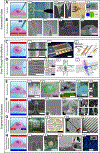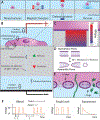High Throughput and Highly Controllable Methods for In Vitro Intracellular Delivery
- PMID: 33241661
- PMCID: PMC8729875
- DOI: 10.1002/smll.202004917
High Throughput and Highly Controllable Methods for In Vitro Intracellular Delivery
Abstract
In vitro and ex vivo intracellular delivery methods hold the key for releasing the full potential of tissue engineering, drug development, and many other applications. In recent years, there has been significant progress in the design and implementation of intracellular delivery systems capable of delivery at the same scale as viral transfection and bulk electroporation but offering fewer adverse outcomes. This review strives to examine a variety of methods for in vitro and ex vivo intracellular delivery such as flow-through microfluidics, engineered substrates, and automated probe-based systems from the perspective of throughput and control. Special attention is paid to a particularly promising method of electroporation using micro/nanochannel based porous substrates, which expose small patches of cell membrane to permeabilizing electric field. Porous substrate electroporation parameters discussed include system design, cells and cargos used, transfection efficiency and cell viability, and the electric field and its effects on molecular transport. The review concludes with discussion of potential new innovations which can arise from specific aspects of porous substrate-based electroporation platforms and high throughput, high control methods in general.
Keywords: electroporation; intracellular delivery; localized cell electroporation; porous substrates.
© 2020 Wiley-VCH GmbH.
Figures



References
-
- Engler AJ; Sen S; Sweeney HL; Discher DE, Cell 2006, 126 (4), 677–689. - PubMed
Publication types
MeSH terms
Grants and funding
LinkOut - more resources
Full Text Sources

